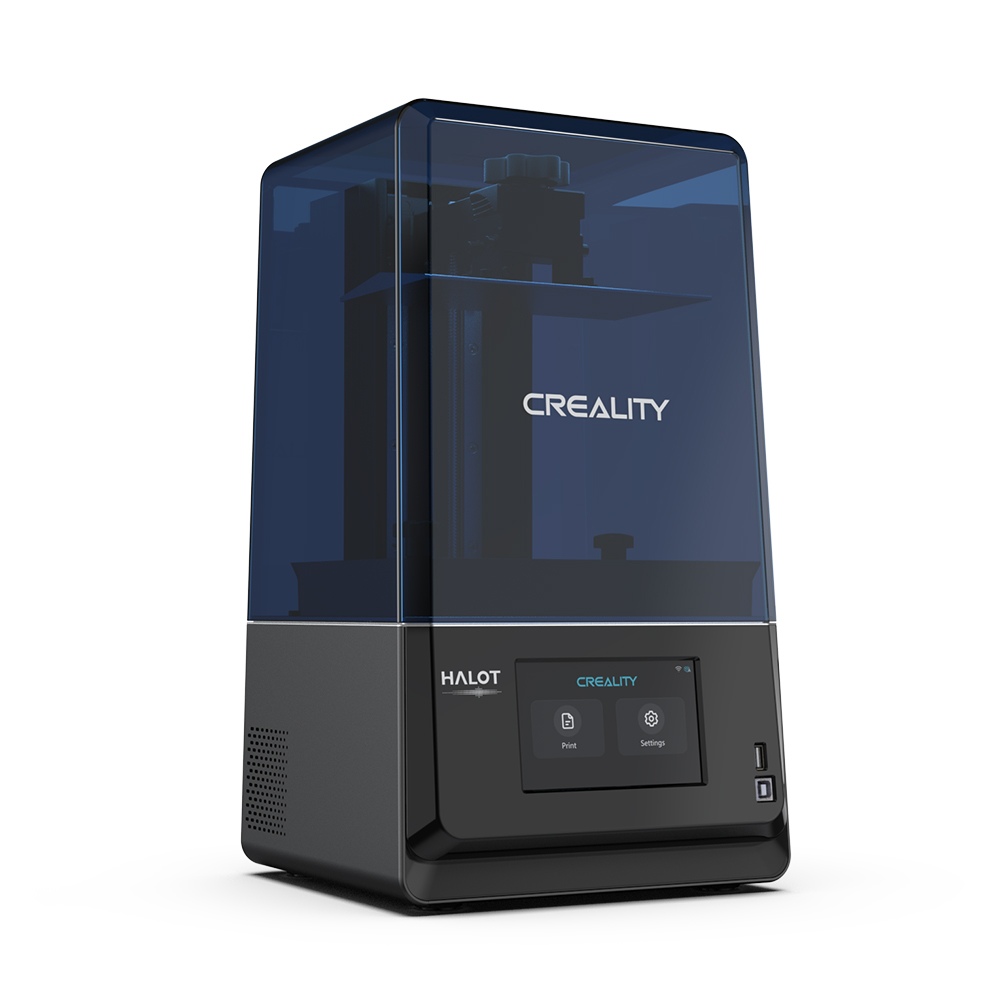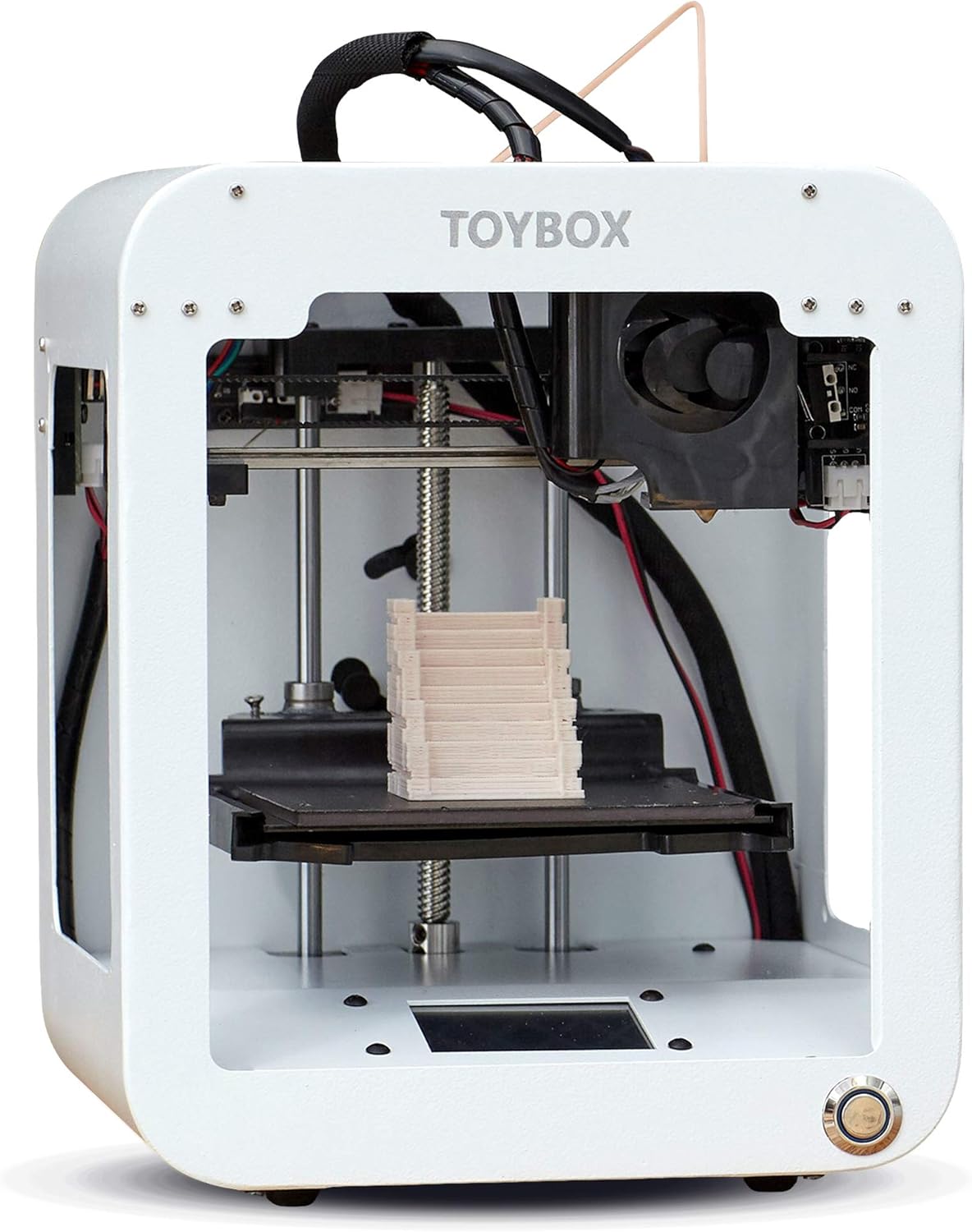Compare Halot One Plus vs Toybox
Comparison between the best 3D printers
Choose the best 3D printer at the best price. The cheapest 3D printers are here.
Buy a 3D printer here with 3D Fila.
 |
 |
|
| Model | Halot One Plus[BUY Halot One Plus] |
Toybox[BUY Toybox] |
| Printing Material | Resin | Filament |
| Buy Resin for Creality 3D Halot One Plus | Buy Filament forToybox Toybox | |
| Estimated price | $399,00 | $299,00 |
| Manufacturer | Creality 3D | Toybox |
| Release Year | 2022 | 2024 |
| Print Volume [mm] | 102x172x160 | 70x80x90 |
| Printer Size [mm] | 236x245x416 | 190x190x230 |
| Weight [kg] | 6,8 | 3 |
| Power Loss Recovery | NO | NO |
| Maximum Resolution [mm] | 0,2 | |
| Processor | ||
| Display | Touchscreen 2,4'' | |
| Power Supply | ||
| Connectivity | USB / Wi-Fi | Wi-fi |
| Operating systems | iOS, Android | |
| Date of registration in the system | 2022-10-11 | 2024-08-06 |
| Release date | 2022 | 2024 |
| Extra features | Crealitys Halot-One Plus printer stands out for its 4K+ resolution that delivers sharp details and consistent surfaces. It features a fast and responsive 5-inch LCD interface, as well as easy-to-use Halot Box software. It offers Wi-Fi connectivity and remote print monitoring, as well as an integrated air filtration unit, a rare feature in this price range. The Halot-One Plus is designed for the prosumer market, combining high quality with advanced features such as Wi-Fi and air filtration. During testing, it stood out for implementing these features at an affordable cost, while maintaining functionality. It features an attractive design with a UV-resistant blue cover and a robust dual rail system for the Z-axis, ensuring smooth and consistent movements. The large LCD and high resolution of the LCD mask (4320 x 2560) are other strong points, allowing for fine details and textures in prints. | The Toybox 3D printer is an excellent option for children and beginners. Easy to use, with intuitive setup and simplified operation via an app. The Toybox allows you to print thousands of toys and projects through a user-friendly interface. It has a removable magnetic table that makes it easy to remove printed objects. The filament is PLA, safe for children, and the printing is reliable and error-free. It also offers custom design options, allowing you to create and print drawings and photos. |
| Support for multiple colors and materials (AMS and CFS) | NO | NO |
Notes * |
||
| Cost-benefit | 8 / 10 | 6 / 10 |
| Hardware | 1.2 / 10 | 0.8 / 10 |
| Tela | . | . |
| Print volume | 3 / 10 | 3 / 10 |
| Performance | 9 / 10 | 0 / 10 |
| [BUY Halot One Plus] | [BUY Toybox] |
Conclusion |
| In comparing the **Creality 3D Halot One Plus** and the **Toybox** 3D printers, several key factors emerge that highlight their respective strengths and target audiences. The **Halot One Plus**, positioned as a prosumer printer, offers superior print resolution and a larger print volume, catering to users who require fine details and intricate designs. Its advanced features, such as Wi-Fi connectivity, a touchscreen interface, and an integrated air filtration system, enhance usability and operational efficiency. This model is ideal for enthusiasts and professionals who prioritize print quality and reliability. Despite its higher price point, the Halot One Plus provides significant value through its robust design and versatility. Conversely, the **Toybox** targets a more casual user base, particularly children and beginners. Its simplified operation via a dedicated app and its focus on printing toys and simple objects make it an accessible choice for those new to 3D printing. The use of safe, easy-to-handle PLA materials further appeals to a family-oriented market, emphasizing usability over advanced features. However, it lacks the print volume and detail resolution of the Halot One Plus, which may limit its capabilities for more complex projects. In sum, if your primary concern is high-quality, detailed prints and you are willing to invest in a more advanced option, the **Creality 3D Halot One Plus** is the superior choice. Alternatively, for users seeking a straightforward, user-friendly entry into 3D printing, particularly for children, the **Toybox** is a commendable option that offers simplicity and safety at a lower price point. The decision ultimately hinges on your specific needs and whether you prioritize functionality or ease of use. |

